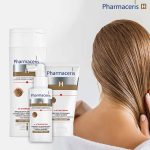*Sponsored post: Aesthetica Skin Centre*
The E-50 Skin Booster is now available at Aesthetica Skin Centre, offering patients a new approach to skin restoration and balance. Powered by salmon-derived exosome technology, the treatment works at a cellular level to support repair, resilience, and healthier skin function. With benefits including improved hydration, reduced redness, and stronger skin structure, E-50 is designed to help skin look and feel its best.
What if your skin could speak?
Meet E-50 by Primacure – The Skin Booster That Listens and Responds
Imagine if your skin could whisper what it needs: to be calmer, clearer, smoother, and stronger. Now, imagine there is a treatment that truly listens.
At Aesthetica White Lies, we have introduced a skin booster that does more than deliver ingredients. E-50 Skin Booster is powered by exosome technology, a breakthrough in regenerative aesthetics that assists your skin cells to communicate, repair, and reset themselves from within.
So, what are exosomes?
Think of exosomes as natural messengers – tiny parcels sent between cells, carrying healing instructions. They don’t just add hydration or nutrients; they guide your skin to restore itself.
E-50’s exosomes come from salmon testis cells (salmon sperm), specifically chosen due to their high compatibility with human cells. This means your skin recognises and responds to them more easily, especially when it’s stressed, inflamed, or showing signs of ageing.
Why it matters: From surface to cellular
While most treatments focus on the dermis – the layer beneath the surface – E-50 also strengthens the dermo-epidermal junction (DEJ), the thin but essential connection between your skin’s outer layer (epidermis) and inner layer (dermis).
The DEJ plays a crucial role in maintaining your skin’s structure, hydration, and youthful appearance by anchoring the epidermis firmly to the dermis, facilitating nutrient exchange, and supporting cellular communication.
As we age or when our skin becomes damaged, this junction can weaken and flatten, leading to issues like wrinkles, loss of firmness, dehydration, and increased sensitivity. E-50 helps rejuvenate this vital boundary, restoring its integrity and function.

Clinical biopsies after E-50 treatments have shown:
- A 52% increase in epidermal thickness
- A 61% boost in basal keratinocyte density
- Improved collagen density and visible DEJ restoration
This means your skin not only looks better but also functions better.
Real-life improvements, quiet confidence
In one long-term case study, just two E-50 treatments (combined with gentle microneedling) resulted in:
- Pore size reduced by 41%
- Rosacea-related redness reduced by 42%
- Melasma improved by 31%
- No rebound, no downtime, and no extra intervention for 21 months
Is it dramatic? No.
Is it effective? Absolutely.
E-50 does not promise perfection; it encourages restoration. And that is a different kind of beauty.


How does E-50 compare to PRP?
Platelet-rich plasma (PRP) therapy, a well-established regenerative treatment, involves extracting and re-injecting your own platelets into your skin to promote healing and regeneration. While PRP harnesses your body’s growth factors to stimulate collagen production, E-50’s exosomes offer several distinct advantages:
- Consistency and quality: E-50 exosomes are lab-derived under strict quality controls, ensuring uniform potency. PRP quality varies depending on individual health and extraction methods.
- Broader range benefits: E-50 delivers targeted signals beyond just growth factors, including peptides and cytokines, that directly instruct cellular healing, inflammation control, and barrier repair.
- Non-invasive application: E-50 is a topical treatment that is often combined with microneedling.

Is it right for you?
E-50 may be suited to skin that:
- Reacts easily (redness, irritation, rosacea)
- Struggles with pigmentation or uneven tone
- Is tired, stressed, or showing early signs of ageing
- Needs support after peels, microneedling or laser
It’s topical, non-invasive, and easy to integrate into custom treatment plans. We also offer take-home masks and ampoules to support the process between sessions.
A skin conversation worth having
Skincare isn’t always about doing more – sometimes it’s about doing smarter. E-50 Skin Booster opens a new dialogue between skin and science. Subtle, intelligent, restorative. Not a makeover, but a cellular invitation to return to balance.
And that’s what we’re here for – at Aesthetica Skin Centre, we don’t chase trends. We support skin the way it was designed to heal.
Ready to listen to what your skin is saying? Schedule your personalised consultation and begin your journey towards healthier, more balanced skin.

Schedule an appointment at Aesthetica Skin Centre
Website: www.theskincentre.co.za
Phone: +27 78 148 5540
Email: info@theskincentre.co.za
Physical address: 32 O’Reilly Merry St, Northmead, Benoni, 1501, Ekurhuleni
Follow Aesthetica Skin Centre on Instagram and Facebook
References:
- Breitkreutz, D., et al. (2013). Skin basement membrane: The foundation of epidermal integrity—BM functions and diverse roles. BioMed Research International, 2013, 179784. https://pubmed.ncbi.nlm.nih.gov/23586018/
- Chu, S., et al. (2021). Safety profile for microneedling: A systematic review. Dermatologic Surgery, 47(9), 1249–1254. https://pubmed.ncbi.nlm.nih.gov/34448760/
- Del Rosso, J.Q. (2012). Advances in understanding and managing rosacea: Pathophysiological mechanisms with emphasis on vascular changes and facial erythema. Journal of Clinical and Aesthetic Dermatology, 5(3), 16-25. https://pubmed.ncbi.nlm.nih.gov/22468176/
- Ha, D.H., et al. (2020). Mesenchymal Stem Cell-Derived Exosomes for Immunomodulatory Therapeutics and Skin Regeneration. Cells, 9(5), 1157. https://pubmed.ncbi.nlm.nih.gov/32392899/
- Kang, H.Y., et al. (2021). Alterations of the pigmentation system in the aging process. Pigment Cell & Melanoma Research, 34(4), 800-813. https://pubmed.ncbi.nlm.nih.gov/34048137
- Lee, Y.S. (2025). Histological Evidence of Epidermal and DEJ Remodeling with Topical Exosome Therapy. (Original study provided by PrimaCure, supported by histological biopsy analysis demonstrating increased epidermal thickness, rete ridge complexity, and collagen density.)
- Lee, Y.S. (2025). Regenerative Skin Remodeling Through Exosome-Based Therapy: 21-Month Sustained Outcomes in Pore Size, Erythema, and Hyperpigmentation. (Long-term case report provided by PrimaCure with quantitative image analysis.)
- Nainggolan, A.D.C., et al. (2023). Microneedle-mediated transdermal delivery of genetic materials, stem cells, and secretome. Pharmaceutics, 15(12), 2767. https://www.mdpi.com/1999-4923/15/12/2767
- Najafabadi, A.H., et al. (2024). Exosomes in skin photoaging: Biological functions and therapeutic opportunities. Cell Communication and Signaling, 22(1), 32. https://pubmed.ncbi.nlm.nih.gov/38217034/
- Quan, T., et al. (2013). Enhancing structural support of the dermal microenvironment activates fibroblasts, endothelial cells, and keratinocytes in aged human skin. Journal of Investigative Dermatology, 133(3), 658–667. https://pubmed.ncbi.nlm.nih.gov/23096713/
- Tienda-Vázquez, M. A., et al. (2023). Exosomes: A promising strategy for repair, regeneration, and treatment of skin disorders. Cells, 12(12), 1625. https://pubmed.ncbi.nlm.nih.gov/37371095/
- Wu, J.Y., et al. (2022). Stem cell-derived exosomes: A new method for reversing skin aging. Tissue Engineering and Regenerative Medicine, 19(5), 961-968. https://pubmed.ncbi.nlm.nih.gov/35809187/






